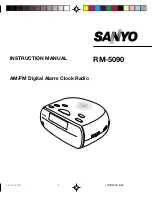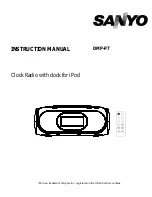
Copyright 2004, 2005, 2007 Sphere Research Corporation Nixie Clock Kit Instructions Page 3
PARTS IDENTIFICATION:
All parts have part numbers, values or color codes to identify them. Many different
but equally correct parts can often be used in specific locations, and we may use different parts because of
availability issues. The parts list generally covers the details of what parts, or range of parts can be used. ICs in
particular have wildly varying part identifications, each maker has their own prefix, suffix and number format
wrapped around a common core number. If you are not sure, please email us for clarification, at
[email protected]. Color codes are common on resistors, and you should become familiar with that type of
marking.
You can go to our website here for a color code decoding chart at the bottom of the page:
http://www.sphere.bc.ca/test/data.html
SOLDERING:
The correct way to solder is to clean the tip of your iron, and first insure it has a smooth coating of
solder to transfer heat. Then, heat the part and board with the tip of your iron, and feed the
solder to the parts
,
which will melt the solder when the lead and pad are hot enough. A well-tinned, clean tip makes this very easy.
There are many good assembly techniques, but the best is usually to insert the part, spread the leads to pull the
part snug to the board, and clip the lead close to the board. Then solder the junction, and no further work is
required.
ALWAYS install any solder in Nixies as the LAST STEP in assembling the board
. They are very
fragile, and easily broken with handling. It can be hard to thread all the Nixie leads into the board. Sometimes
trimming them evenly to just ½” makes this much easier. Adjust the tube carefully to be sure it is straight in every
axis, and tack solder two leads. Recheck again, and when all if correctly aligned, go ahead and solder each pin
carefully, being careful not to bridge two pads. The pads are small at the nixie tubes and ICs, so be careful, and
be patient. If you are using the nixie tube pads to connect an external tube, use ribbon cable, and
note that the
pads are identified by function (digits 0-9 and A for anode), rather than pin numbers.
MODIFICATIONS:
You can use many other power supplies, or an external time base (by omitting U7 and U8,
and Y1, then inject a CMOS/TTL compatible logic clock at J8 External Clock, along with a ground return) with this
clock board. Other Nixies can be used in two ways, either wired to the PCB pads normally used for the on-board
tubes, or via a remote display board.
Observe that the Nixie Tube pads show the FUNCTION, not the pin
number for ease in doing this. You can also attach different display boards via the 20 pin headers, simply
pull the on-board nixie driver ICs to use this function.
Содержание U6DNC Series
Страница 6: ...Copyright 2004 2005 2007 Sphere Research Corporation Nixie Clock Kit Instructions Page 6 ...
Страница 7: ...Copyright 2004 2005 2007 Sphere Research Corporation Nixie Clock Kit Instructions Page 7 ...
Страница 8: ...Copyright 2004 2005 2007 Sphere Research Corporation Nixie Clock Kit Instructions Page 8 ...




































